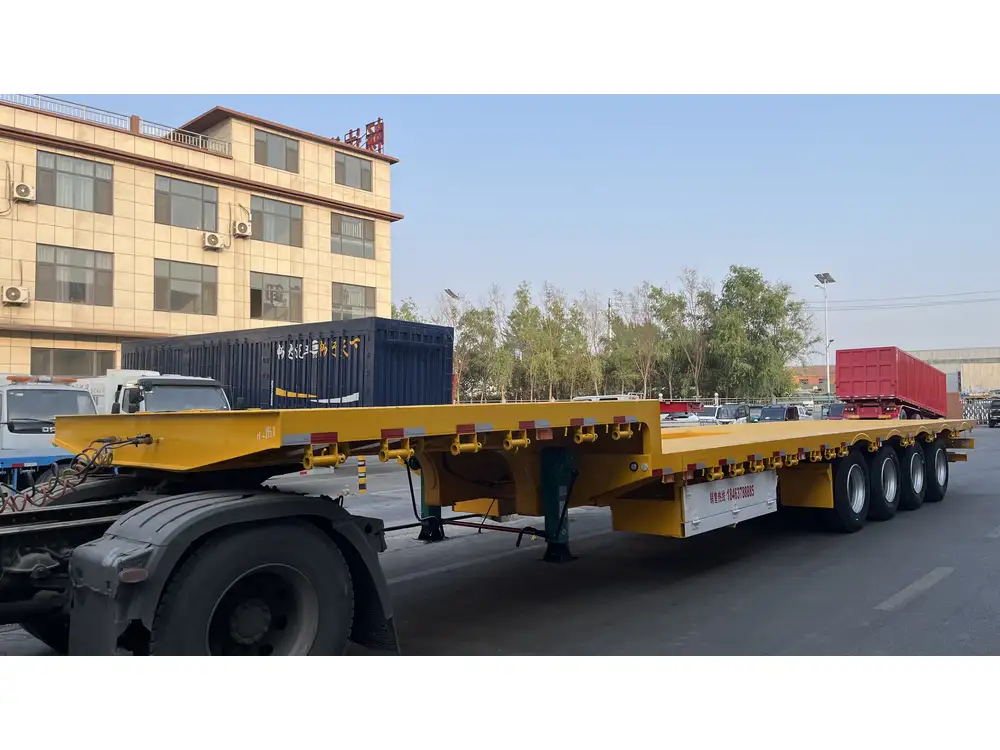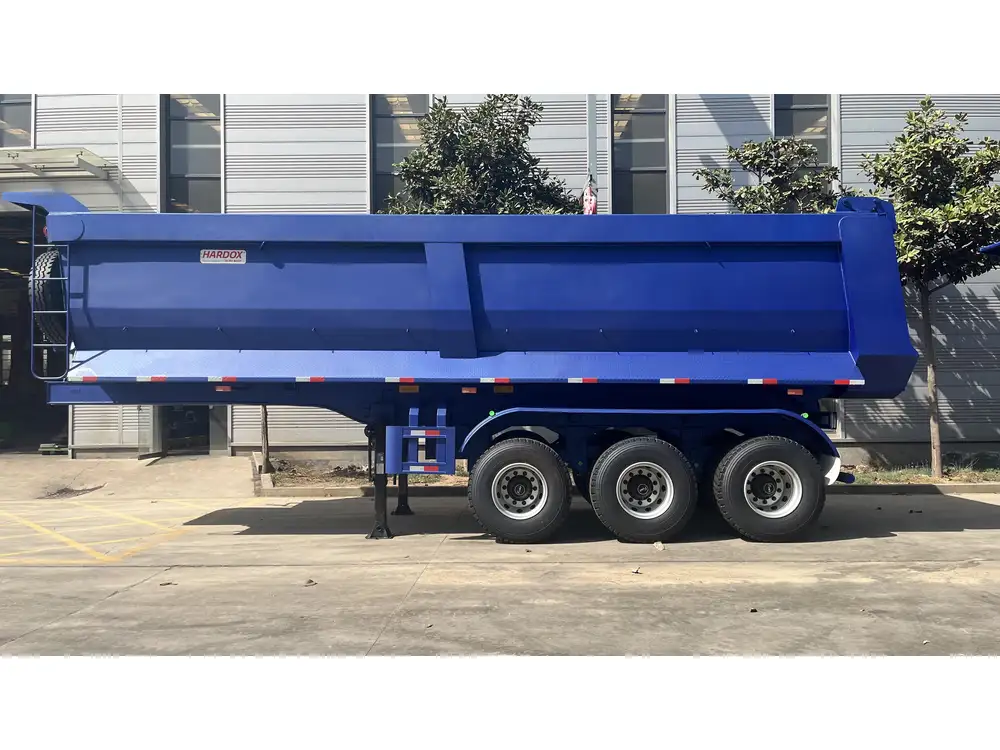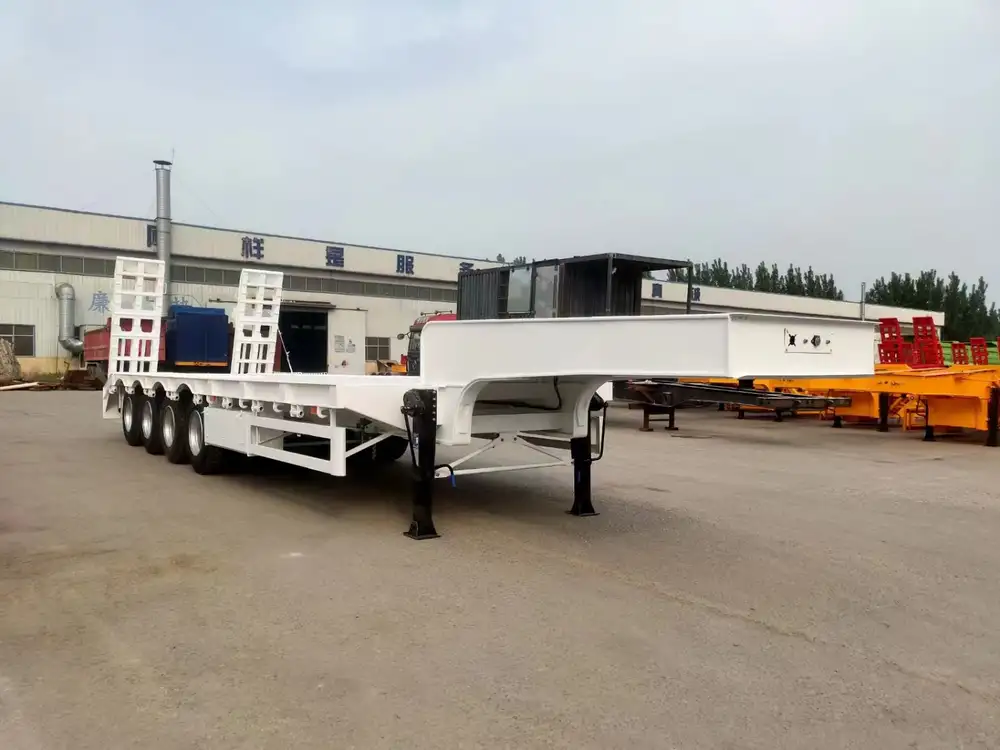Dump trailers have become an indispensable tool in various industries, from construction and landscaping to agriculture and waste management. Understanding the hauling capacity of dump trailers is crucial for operators, businesses, and DIY enthusiasts alike. In this article, we delve deep into the factors influencing a dump trailer’s hauling capacity, explore various types of dump trailers available, and provide you with essential guidelines to optimize your hauling needs effectively.
Understanding Dump Trailer Specifications
The Role of Gross Vehicle Weight Rating (GVWR)
Every dump trailer comes with a Gross Vehicle Weight Rating (GVWR), which represents the maximum weight the trailer can safely carry, including its own weight, cargo, and any additional items. Knowing the GVWR is critical for ensuring safe operations and compliance with local regulations.

Unloaded Vehicle Weight (UVW)
The Unloaded Vehicle Weight (UVW) is the weight of the trailer when it is empty. This weight must be factored into the total weight that a dump trailer can haul. To find out how much a trailer can carry, subtract the UVW from the GVWR:
[ \text{Hauling Capacity} = \text{GVWR} – \text{UVW} ]Payload Capacity
Payload capacity refers to the actual weight of the materials you can load onto the trailer. This can vary based on the trailer type and its design. For example, a standard dump trailer might have a payload capacity ranging from 5,000 to 20,000 pounds, whereas specialized trailers could handle more.
| Dump Trailer Type | Typical GVWR | UVW | Average Payload Capacity |
|---|---|---|---|
| Standard Dump Trailer | 10,000 – 20,000 lbs | 2,500 | 7,500 – 17,500 lbs |
| Heavy-Duty Dump Trailer | 20,000 – 30,000 lbs | 4,500 | 15,500 – 25,500 lbs |
| Power Tilt Dump Trailer | 12,000 – 22,000 lbs | 3,000 | 9,000 – 19,000 lbs |
| Dump Gooseneck Trailer | 25,000 – 30,000 lbs | 5,000 | 20,000 – 25,000 lbs |
Types of Dump Trailers and Their Capacity

Standard Dump Trailers
Standard dump trailers are versatile and common in many settings. They typically range in capacity from 5,000 to 15,000 pounds. These trailers are perfect for hauling gravel, soil, mulch, and other construction materials. They often come equipped with a hydraulic lift to facilitate loading and unloading.
Heavy-Duty Dump Trailers
Heavy-duty dump trailers, designed for more demanding jobs, can carry between 15,000 and 30,000 pounds. Built with reinforced materials, these trailers are suitable for hauling heavy materials like demolition debris, large machinery, and extensive landscaping materials.
Power Tilt Dump Trailers
Power tilt dump trailers utilize a hydraulic system that tilts the trailer bed for quick unloading. With a typical capacity of 10,000 to 20,000 pounds, they are excellent for handling sand, gravel, and waste materials. Their ease of use makes them a popular choice for small contractors and DIY projects.

Gooseneck Dump Trailers
Gooseneck dump trailers offer superior stability and capacity, usually ranging from 20,000 to 30,000 pounds. These trailers are hitched to a truck bed and are ideal for heavy loads, including construction equipment and bulk materials. Their design allows for safer towing and increased maneuverability.
Off-Road Dump Trailers
For operations in rough terrains, off-road dump trailers are designed to handle difficult conditions. Their capacities typically range from 5,000 to 10,000 pounds. These trailers often have larger tires and reinforced frames to withstand harsher environments, suitable for mining operations or remote construction sites.
| Trailer Type | Capacity Range | Ideal Use Cases |
|---|---|---|
| Standard Dump Trailer | 5,000 – 15,000 lbs | General construction, landscaping |
| Heavy-Duty Dump Trailer | 15,000 – 30,000 lbs | Demolition, heavy material transportation |
| Power Tilt Dump Trailer | 10,000 – 20,000 lbs | Landscaping, waste management |
| Gooseneck Dump Trailer | 20,000 – 30,000 lbs | Machinery transport, bulk materials |
| Off-Road Dump Trailer | 5,000 – 10,000 lbs | Mining, remote construction |
Factors Affecting Hauling Capacity
Understanding the various factors that impact how much a dump trailer can haul is key to optimizing its use. Below are several significant considerations.

Trailer Configuration
The configuration of a dump trailer can greatly influence its hauling capacity. Tandem axle configurations typically allow for heavier payloads than single axle ones. The distribution of weight across multiple axles provides stability during transport.
Suspension System
The type of suspension system can affect a dump trailer’s ability to handle load distribution. Trailers with air ride suspensions offer greater weight capacity and can provide a smoother ride, while those with leaf spring suspensions are generally more durable for heavier loads but may have limited comfort.
Towing Vehicle Capability
The towing capabilities of the vehicle pulling the dump trailer cannot be overlooked. It’s essential to match the tow vehicle’s towing capacity with the trailer’s GVWR to ensure safety and optimal performance. Overloading can lead to accidents and damages, making it vital to consult the vehicle’s manufacturer specifications.

Road Conditions
The condition of the roads you’ll be traveling significantly impacts the type and amount of material that can be safely hauled. Poor road conditions may necessitate lower payloads to ensure safe transport and minimize wear on both the trailer and the towing vehicle.
Load Type
Different materials possess varying weights per cubic yard. For example, a cubic yard of sand weighs approximately 2,700 pounds, while a cubic yard of gravel weighs about 2,000 pounds. Understanding the type of material being loaded is crucial for calculating accurate payloads.
| Material | Weight per Cubic Yard | Payload Example (3 yards) |
|---|---|---|
| Sand | 2,700 lbs | 8,100 lbs |
| Gravel | 2,000 lbs | 6,000 lbs |
| Dirt | 2,000 – 2,200 lbs | 6,000 – 6,600 lbs |
| Mulch | 800 – 1,000 lbs | 2,400 – 3,000 lbs |
Safety and Legal Considerations

Load Securement
Proper load securement is crucial to prevent materials from shifting during transport. Using tarps, straps, and side boards are essential to comply with safety regulations and enhance road safety. Failing to secure a load can lead to accidents and potential legal repercussions.
Weight Limits and Regulations
Different regions have specific weight limits on public roads and highways. Exceeding these limits can result in fines and legal issues. Operators must familiarize themselves with local weight regulations to avoid penalties while ensuring safe transport.
Regular Maintenance
Routine maintenance of both the dump trailer and towing vehicle is vital for safe operations. Regularly checking brakes, tires, and hydraulic systems ensures reliable performance under heavy loads. Preventative maintenance minimizes the risk of breakdowns and enhances the overall lifespan of the equipment.

Conclusion: Making Informed Hauling Decisions
In summary, determining the hauling capacity of a dump trailer involves understanding several key factors, including the trailer’s specifications, type, and the materials being transported. By thoroughly analyzing the GVWR, UVW, payload capacity, and other essential elements, operators can choose the right dump trailer for their specific needs.
To maximize efficiency and safety during operations, always adhere to local regulations, maintain equipment regularly, and secure loads appropriately. The right knowledge and preparation can significantly enhance your hauling experience, ensuring smooth and effective transport of materials.
As you embark on your hauling projects, remember that selecting the appropriate trailer and consciously considering its limitations will optimize performance and safety, leading to successful outcomes in every endeavor.



